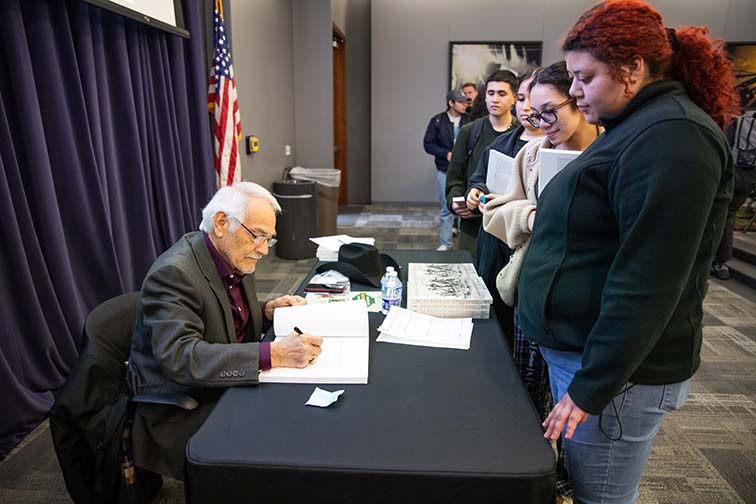
OLLA MOKHTAR
campus editor
olla.mokhtar@my.tccd.edu
TR Campus hosted a speaker series focusing on the inspiration of cowboy culture in Fort Worth, Texas.
In the Energy Auditorium, “History of the Vaquero de Fort Worth” was presented by the honorable judge Manuel Tejeda Valdez and “South Texas Vaquero Life” by the author Andrés Tijerina.
On Jan. 25, the author of “Beasley’s Vaqueros: The Memoirs, Art, and Poems of Ricardo M. Beasley” presented his findings of a famous Vaquero, or cowboy and emphasized the importance of credibility as well.
“The facts about Mexican Americans and vaqueros are true facts that are documented in historical records,” he said. “Not myths, political arguments, questions. Believable fact.”
Tijerina chose Ricardo Beasley because he was the only artist who has ever produced an entire art portfolio of vaqueros. They are not mentioned as much as Comanches, confederate heroes and African American civil rights leaders in America, so he opted to teach about the vaqueros.
“Historians have studied and written only facts that gratify their own audience,” he said. “We now have historians who are dedicated not only to an Anglo American audience, but to true scholarly facts.”
Tijerina compiled the work of Beasley to enrich the audience’s understanding and impact of the Tvaqueros.
“Vaqueros are American heroes,” he said. “Icons who changed American history, diet, clothing, cattle industry, riding skills, etc. that affects our daily lives and pride as Texans.”
He said that the audience was a mix of students, faculty, college executives and public leaders who were grasping for significant facts in his presentation, and probed for meaning in their own life.
“Like a student’s own personal life goals, a judge’s public bronze statue for the city, the college president’s hands-on personal attention to his students’ academic development.”
He explained the reason behind getting to know the vaqueros.
“Why do they have to know about the American Revolution? Why do they have to know how Grampa got rich or didn’t get rich? They now know how to get that wealth, and that they must know how to preserve it,” he said.
Honorable Judge Manuel Valdez described the event as being for educational purposes, and what the audience can absorb is the most important.
“Events like this are very important so that you can intertwine with the speaker and how it touches you and how you can relate to it,” he said. “Education is the key word to gathering of this nature.”
“The vaqueros played a major role in this state, and particularly in the city of Fort Worth. This institution (TCC) is very much a part of that and will convey this message forward,” he said.
Educating the audience about the vaqueros also meant passing on his knowledge.
“All it takes is one person in the audience to grab the button and move it forward,” he said.
As the grandson of a vaquero himself he gives credit to growing up in that environment for his interest in this subject.
“Overall, the diligent quest of Lucia Ramirez-Amarasekara and Lisa Blank to acquisitively identify programs will stimulate their students to broaden their horizons with professional presentations from the highest scholars,” Tijerina said.

